8. Back to the Future (1985)
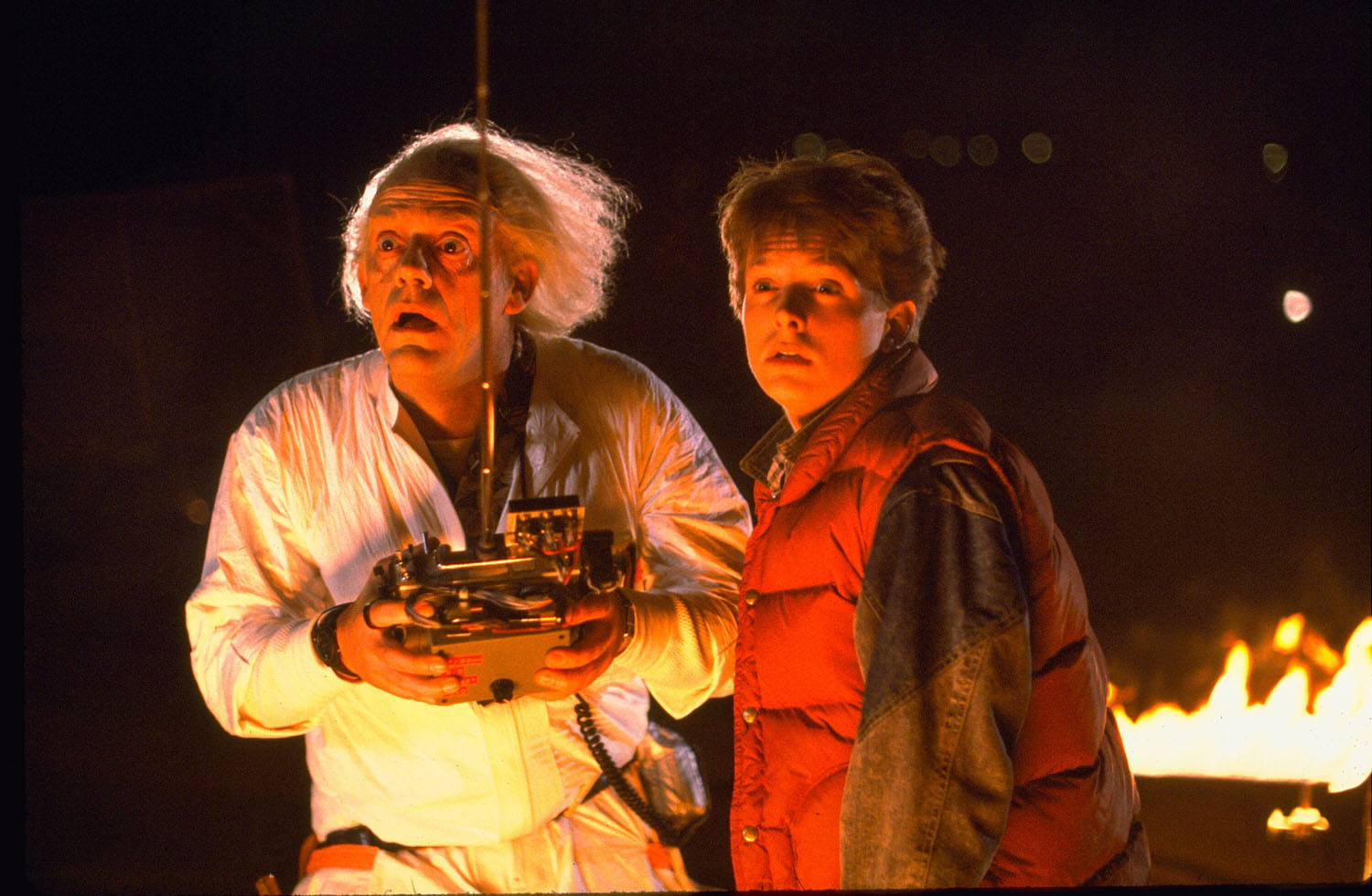
In addition to being a beloved blockbuster, Back to the Future also represents a high water mark for director Robert Zemeckis, a director overly fond of gimmicks, here hitting a grand slam home run and ordaining a tidy three-part franchise, too. A great script from Zemeckis and Bob Gale circles and pirouettes around the 1980s-back-to-1959s time-travel clusterfudge which, astounding special effects and production design is also anchored by an amazing cast.
Michael J Fox is our engaging teenaged hero Marty McFly, aided by scene-stealing Christopher Llyod’s Doc Brown, the absent-minded professor and slapstick specialist. Also in fine form is Crispin Glover as Mr Density himself, George McFly.
From the 1.21 gigawatts needed to juice the flux capacitor––what makes time travel possible––to dodging bully Biff Tannen (Thomas F. Wilson), to shaking a leg at the Enchantment Under the Sea dance, inventing skateboarding and inspiring Chuck Berry to shred his electrified guitar, Back to the Future is a well-loved and exceedingly quotable classic.
7. RoboCop (1987)
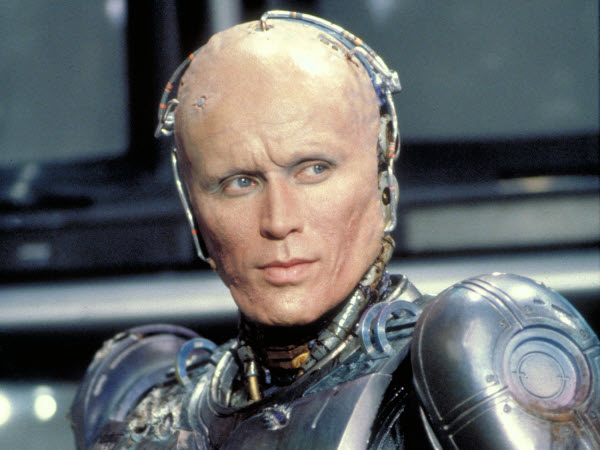
Director Paul Verhoeven’s pairing of sarcasm and wonder works magnificently in this dystopian future of crime-ridden and impoverished America. In the near future the city of Detroit is rotting from rampant crime, the police force––privately owned by Omni Consumer Products––is overwhelmed and Officer Alex Murphy (Peter Weller) has just been brutally beaten and left for dead.
Resurrected as half-man hybrid RoboCop, an efficient law enforcement machine, and aided by Officer Anne Lewis (Nancy Allen), the pair will battle city-wide corruption, and power-starved government suits––look out Dick Jones (Ronny Cox)!––in relentlessly satirical and blood-soaked fashion.
The future depicted here is bleak and pitch-black, but it’s no dirge thanks to Verhoeven’s subversive strengths and the stunningly brilliant script from Edward Neumeier and Michael Miner. It’s a better film than its synopsis suggests, transcending the exploitation premise and comic book modality into something strangely intellectual and deeply rewarding. Now, “I’d buy that for a dollar”, wouldn’t you?
6. E.T. the Extra-Terrestrial (1982)
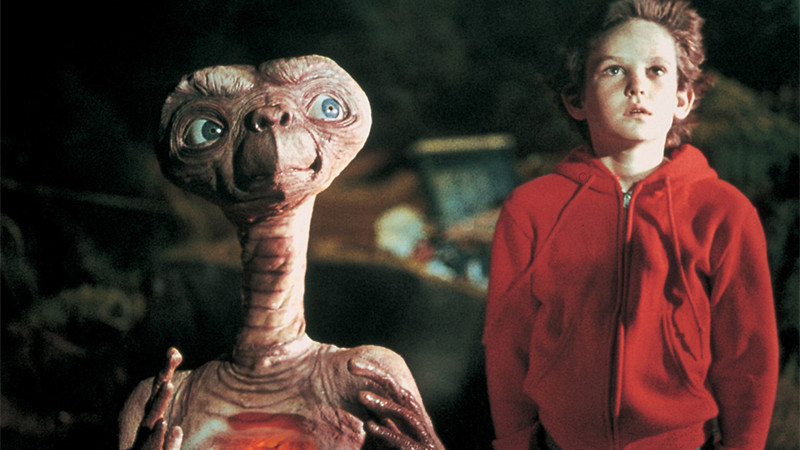
Intimate in tone and surprisingly small in scale, Steven Spielberg’s E.T. was released to staggering box-office success. E.T. is ostensibly about an outsider stranded far from home––don’t worry, he’ll eventually phone home and ask for a ride––but it’s also a fine film that articulates like no other how a child’s mind works, how families function, and how grown-ups lose sight of wonder once and awhile.
Henry Thomas is ten-year-old Elliott, and his older brother, Michael (Robert MacNaughton), and kid sister Gertie (Drew Barrymore), are soon made privy to the fact that Elliot has an alien BFF who they’ll have to help get home. Huge hearted, magical, imaginative and irresistibly funny, E.T. is one of the finest family films of all time, emotional, evenhanded, and sublime, this is one for everyone. A gem.
5. The Empire Strikes Back (1980)
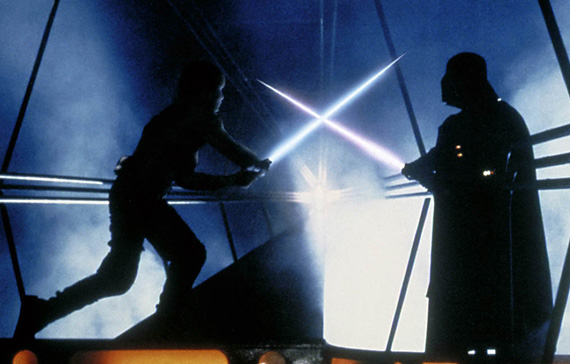
This first Star Wars sequel yields so much from a relatively simplistic sci-fi formula, making for an emotionally absorbing and satisfying space opera, rich in philosophy and special effects fun, never shying from danger and still maintaining delirious levels of joy.
Highlights include all things Hoth, hunky rogue Han Solo (Harrison Ford) trying to melt icy Princess Leia (Carrie Fisher)––their easy back-and-forth recalling the best Bogart-Bacall song-and-dance you’ve never seen––self-exiled Jedi Master Yoda, and Darth Vader’s shocking utterance admission to Luke, one of the greatest plot twists in all of cinema.
George Lucas is wisely in the producer chair, allowing director Irvin Kershner to call the rolls and cuts. Kershner finds the beautiful balance between strong characters, winning humor, warm sentiment, and palpable danger. The Empire Strikes Back is regularly considered the strongest of all the Star Wars franchise and it’s easy to see why. Though the possibility of successfully navigating an asteroid field is approximately 3,720 to 1, the possibility of enjoying this film and singing its praises are significantly higher.
4. The Terminator (1984)
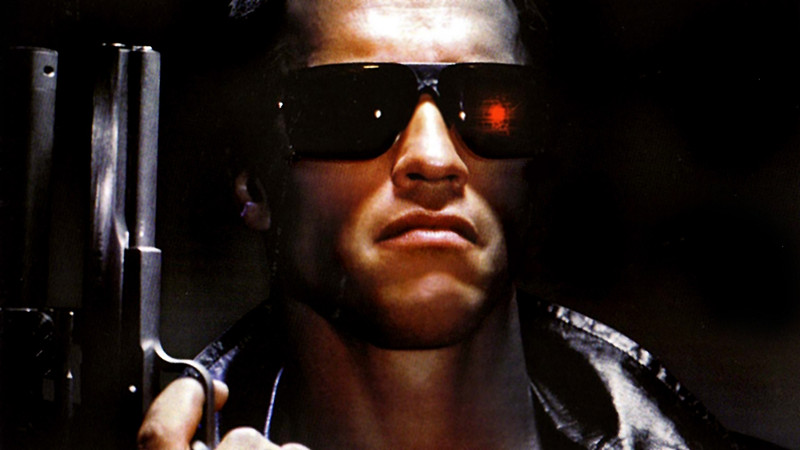
James Cameron’s sophomore film, Terminator, is a wonderfully assured sci-fi actioner which lands like lightening, especially after his lacklustre debut, the almost laughably unwatchable genre exercise Piranha 2: The Spawning. Luckily someone at Orion Pictures had faith in Cameron and his franchise starting killer robot tale.
The story is unabashedly pulpy: a killing machine from the post-apocalyptic future covered in synthetic skin (Arnold Schwarzenegger in his most recognizable and arguably greatest role) is sent back in time to murder Linda Hamilton’s Sarah Connor. Sarah is the mother of a future war hero and saviour. Luckily Michael Biehn’s Kyle Reese is also sent back to help Sarah and teach her about the Terminator and the possible future.
The Terminator is a landmark movie, brainier than most action pics, infused with danger, one-liners aplenty––”Come with me if you want to live!”––new levels of slapstick violence, and a circular narrative that barely holds together. The result is a genre classic that guarantees you’ll be back.
3. The Thing (1982)
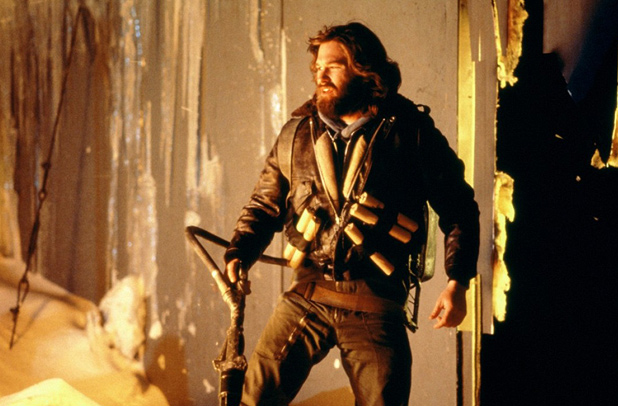
John Carpenter’s 1982 masterpiece––shockingly and wrongly maligned on its initial release––The Thing (a kinda sorta but not really remake of 1951’s The Thing from Another Planet) is gratuitous in its gore and relentless in its mounting mental fatigue. Akin to David Cronenberg in its body invasion themes, Carpenter’s use of body horror here is equal parts grotesque and eerily beautiful for its surreal sweep.
An unthawed alien stalks an Antarctic research station and could be anyone due to its shape-shifting capabilities and insatiable bloodlust. This pageant in paranoia is led by Kurt Russell’s PJ MacReady, who tears through tropes of whodunnit, horror with inky black comedy.
The Thing is marvellously and hideously impressive, Carpenter expertly prolongs his literally gut-twistingly intense film––his personal favorite––influential, often imitated, and all around awesome. Cinematic horror is seldom this sensational. Be sure to watch it with the lights on.
2. Brazil (1985)
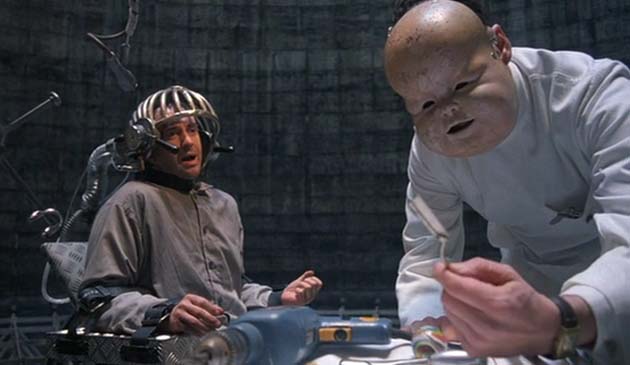
Terry Gilliam perfected the movie mindfuck with his dystopian satire Brazil. This dense, detailed, and visually rich sci-fi fantasy pairs sublimely with a strangely nostalgic retro-future where unexceptional everyman Sam Lowry (Jonathan Pryce) is but a cog in an Orwellian governmental machine.
There’s a slapstick quality to Brazil, which was written by Gilliam along with Tom Stoppard and Charles McKeown, and a majestic ambition in its futuristic depiction of bureaucracy gone mad, and for all it’s bizarro visuals––terrorists with baby-faced masks, angelic dream sequences, Lowry’s mother’s endlessly odd facelifts to retain her youth––it’s a film that can be deliberately hard to follow. That doesn’t mean that Brazil isn’t Gilliam’s finest hour, for it certainly is.
The original title for Brazil, according to Gilliam, was 1984½. “Fellini was one of my great gods,” says the director, “and it was 1984, so let’s put them together.” This easily accounts for the arthouse instincts of the film, as well as the surreal and very serrated edge in this playfully pretentious but still remarkably miraculous sortie into the imagination.
1. Blade Runner (1982)
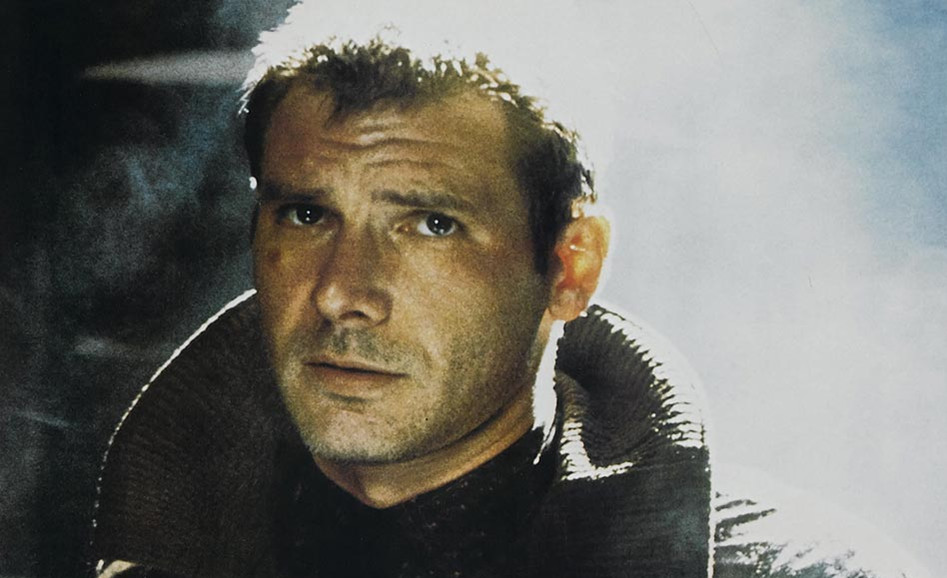
Ridley Scott’s gritty gray postmodern adaptation of Philip K. Dick’s classic sci-fi novel “Do Androids Dream of Electric Sheep?” (1968) anticipated the advent of cyberpunk and reworks familiar film noir trappings to make one of the most iconic and inspired films of 80s.
Set in a smog-shrouded 2019 Los Angeles, Earth has an overpopulation problem, so off world colonies are all the rage. Sweetening the pot of relocating to foreign planets is the Tyrell Corporation who have designed “replicants”––essentially designer humanoids––to work as slave labor and with a limited lifespan. When these replicants go AWOL, a fate which befalls many, it’s the job of the “blade runner” to hunt them down.
Enter laconic former blade runner and disenfranchised ex-police investigator Rick Deckard (Harrison Ford), summoned back into action from the bureau to “decommission” four rogue replicants led by one Roy Batty (Rutger Hauer). Ostensibly the villain of the film, Batty morphs into a mythic tragedian, a modern Prometheus; Deckard, meanwhile, moves from two-fisted hunter to homomorphic malefactor.
Blade Runner busies itself with questions about what it means to be human, dissecting ideas of A.I., consciousness, reality, and other requisite Dickian themes while paying perceptive adulation to wide-ranging influences such as Fritz Lang’s Metropolis (1926), James Whale’s Bride of Frankenstein (1935), Stanley Kubrick’s 2001 (1968), the illustrative grandeur of French comic book legend Jean Giraud (aka Mœbius), the compositions of Edward Hopper, the aesthetics of film noir, and detective fiction à la Raymond Chandler, not to mention being overripe with religious allegory, Blade Runner is a densely packed table d’hôte.
Scott’s pastiche framework is stunning, justifying the cult-like adoration that has embraced Blade Runner over the years––initially, while not a bomb, Blade Runner didn’t meet box office expectations––gradually evolving into the neo-noir showpiece we know and love. We wanted a future with flying cars, but did we want the dystopian discomfort? The answer is a reluctant but resounding yes.
Author Bio: Shane Scott-Travis is a film critic, screenwriter, comic book author/illustrator and cineaste. Currently residing in Vancouver, Canada, Shane can often be found at the cinema, the dog park, or off in a corner someplace, paraphrasing Groucho Marx. Follow Shane on Twitter @ShaneScottravis.